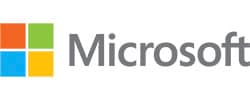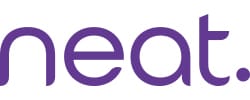August 24, 2023
How a Modernized Digital Experience Improves Hybrid Work
To optimize the digital experience, organizations must carefully consider the needs of both remote and in-person employees to ensure everyone has the secure access and tools they need to fully contribute to business outcomes.
IN THIS ARTICLE
Understanding Common Challenges for Hybrid Work Setups
Overcoming the Hurdles of Secure Connectivity in a Hybrid Environment
Delivering Business Outcomes Through an Optimized Digital Experience
The COVID-19 public health emergency in the U.S. ended in May, but its effects will linger throughout society for years to come, including in the way people work.
Hybrid work, with employees sometimes in the office and other times working remotely, is a trend that will endure. Yet the current hybrid environment is complex, with many organizations supporting multiple platforms for collaboration, both in real time and offline. Conference rooms are now smaller and need videoconferencing equipment to connect with a number of employees who are offsite.
Companies are also evolving the way they communicate with their customers to be more responsive through text messaging and social media. Increasingly, companies are also using automation tools to streamline how work gets done, whether that is in the office or on the go. These tools can help bring efficiency to everything from customer service to invoice approvals. Modernized digital experiences are helping drive transformation to make organizations more proactive and competitive.
At the same time, many organizations face challenges with hybrid work setups. If in-office activity is supposed to drive productivity, technology needs to make the office experience better than being at home. Meanwhile, employees at home can’t afford to waste time struggling to connect to enterprise networks; they need secure and uninterrupted access.
Organizations must ensure that collaboration is streamlined, that the in-office experience doesn’t cause unnecessary IT troubles, and that workers feel empowered to connect and collaborate whether they’re at home, at a coffee shop or in a conference room.
Ultimately, the technology needed to support modern digital experiences and hybrid work should be designed to drive productivity and convenience, both for a company’s internal users and its customers.
A New Way to Hybrid Work
Hybrid work has evolved from the early stages of the pandemic, and organizations are now grappling with how to drive innovation and productivity.
Many organizations have multiple platforms they use for collaboration, both internally and with customers. This can lead to friction, along with added costs and management burdens.
Businesses and their customers are increasingly moving to multimodal forms of communication, and automation tools are helping to streamline internal processes and interactions with external customers.
As organizations evolve their hybrid work setups, they need to ensure that the in-office technology experience is exemplary and doesn’t deter employees from coming in.
Some organizations have struggled to meet people’s elevated expectations for the digital experience. In-office technology can sometimes be incompatible with what users outside the office are running. Meanwhile, organizations must ensure that remote workers can contribute and participate in the same ways their in-office counterparts can.
SUBPAR OFFICE EXPERIENCE
If organizations believe that having workers in the office leads to more spontaneous collaboration and higher productivity, then the in-office technology experience needs to be better than what users can get at home. Because remote work gives employees flexibility and convenience, the in-office IT needs to be superior, not subpar.
INCOMPATIBLE SOFTWARE
In the office, if workers are collaborating on one software platform but a conference room is set up to work best with another, that can cause IT headaches and delays in communication, potentially deterring employees from coming into the office.
DIGITAL WHITEBOARDS
Some offices are now equipped with digital whiteboard technology, enabling users to easily brainstorm, sketch out ideas, and incorporate data from web and productivity applications. However, organizations need to make sure users at home can access the technology and contribute meaningfully from remote locations.
NONSTANDARD EXPERIENCES
As organizations attempt to more seamlessly integrate in-office and remote workers, they may look to standardize their software and hardware offerings onto fewer platforms. Streamlining not only helps to reduce costs but can also enhance security by limiting the number of products that need to be patched, maintained and monitored.
REMOTE DEVICE SETUP
Many organizations now have virtual IT help desks that can set up employee devices remotely and ship them to users at home. At the same time, IT teams also have to support enterprise applications running on users’ personal devices and ensure those are secure.
AUTOMATED TOOLS
By leveraging artificial intelligence tools such as chatbots, organizations can shrink wait times and improve accuracy, delivering a superior customer experience. Automated tools can handle routine inquiries and enable workers to focus on the most critical calls. However, many organizations lack the knowledge and skills to fully take advantage of these capabilities.
CDW can empower your digital workforce, anywhere and at any time.
How Hybrid Work Continues to Evolve
39%
The percentage of global knowledge workers who will work in a hybrid setup by the end of 2023, up from 37 percent in 2022
9%
The percentage of global knowledge workers who will be fully remote by the end of 2023
51%
The percentage of U.S. knowledge workers who will work in a hybrid setup by the end of 2023
20%
The percentage of U.S. knowledge workers who will be fully remote by the end of 2023
10%
The percentage of workers who will use virtual spaces for activities such as sales, onboarding and remote work by 2025
67%
The percentage of U.K. knowledge workers who are projected to work in a hybrid or fully remote setup by the end of 2023
Source: gartner.com, “Gartner Forecasts 39% of Global Knowledge Workers Will Work Hybrid by the End of 2023,” March 1, 2023
Organizations must simultaneously provide hybrid workers with uninterrupted access and strong security, which can be a challenge. Connectivity is crucial to ensuring that workers can access the applications they need and collaborate effectively. At the same time, organizations have to think about security differently in hybrid environments, since distributed workforces can increase the attack surface. That’s why zero-trust security is critical to enabling secure, continually authenticated access to enterprise data. Meanwhile, with users connecting to the corporate network through many devices — some of which may be personal devices — organizations need to focus on ensuring that each of them is patched and secured. Organizations also must make sure that decommissioned devices are properly managed and that security standards are met when devices are retired.
1
Fundamental Connectivity
For hybrid work to succeed, both in-office and remote employees must be able to reliably connect to enterprise networks. Organizations need to provide instantaneous, robust and secure network connectivity, usually with multiple backup options.
2
The Need for Zero Trust
In hybrid work environments, organizations can no longer simply build cybersecurity protections around their internal networks. They need to adopt a zero-trust architecture to ensure their data is secure no matter where it resides. Zero trust also enables organizations to continually authenticate remote workers seeking to access enterprise data.
3
Device Management
Because enterprise data can theoretically be accessed on any employee device, organizations must ensure that they can remotely manage devices and potentially sandbox them to guard against security threats. Workers can also use web apps to securely access company information if necessary.
4
A Full Device Lifecycle
With workers in many locations, organizations need to keep employee devices updated with security patches to ensure they can continue to access corporate applications. Employee devices that have been decommissioned also need to be processed and wiped, and companies must get certifications that the devices have been secured.
IT Security for Hybrid Workers
With distributed workforces, organizations are learning that their pre-pandemic cybersecurity methods are no longer adequate. As a result, leading business and IT security leaders are rethinking their network security strategies and cybersecurity investments overall to ensure that employees are protected no matter where they’re working.
78%
The percentage of surveyed employees who believe that cybersecurity is critical to making hybrid work safe
65%
The percentage of respondents who say their organization currently has the right cybersecurity capabilities and protocols
62%
The percentage of respondents who think that all employees in their company understand the cyber risks involved with hybrid work
68%
The percentage of respondents who think their organization’s business leaders are familiar with the cyber risks they face
Source: newsroom.cisco.com, “Cisco Study: Employees say hybrid work makes them happier and more productive, but more needs to be done to make it more inclusive,” April 27, 2022
By optimizing the digital experience for hybrid workers, organizations can achieve significant benefits and positive business outcomes. Doing so allows them to boost recruiting and retention through a streamlined, easy-to-use technology experience for employees. Organizations can leverage automation to increase productivity and improve the customer experience. They can also reduce costs by maximizing the value of their existing tech investments and streamlining portfolios where necessary. Finally, organizations can mitigate risks by deploying a cybersecurity strategy designed for hybrid work.
The technology an organization invests in sends a signal to prospective and current employees about its culture and capabilities.
Achieve Productivity Faster
With so many organizations hiring employees who may live far away from corporate offices, sending fully provisioned and secured devices to new workers is critical in terms of cost and productivity. Employees who receive these devices can start working and get access to critical business applications right away, without having to connect physically with IT staff members.
Streamline Software Costs
Perhaps an organization purchased a software suite for collaboration, but IT and business leaders have observed that employees are using only a fraction of the features the organization is paying for. Through software asset management tools and advisory services from trusted third parties, organizations can quantify the usage and value they are getting out of their software. This may lead them to streamline their software portfolios and reduce costs, allowing them to invest in tools that hybrid workers will use more fully.
Control Access to Data
Ultimately, an optimized hybrid work experience will give employees access to the right data at the right time. For example, a select group of users could get access to a new internal enterprise application on their smartphones, but that access would be strictly controlled. The goal is to enable users to be productive and do their jobs from anywhere while also mitigating security concerns.
Reduce the Burden on IT Teams
Supporting the day-to-day operation of an organization’s hybrid work environment is not a revenue-generating task. Many IT and business executives prefer to offload maintenance responsibilities to a trusted partner. By using collaboration technology as a service, organizations can reduce their data center footprint, streamline support and speed up services to users while accommodating different platforms and enabling one-stop management for functions such as ticketing, reporting and billing.
Harness Low-Code/No-Code Tools
Low-code and no-code development tools enable end users who may not have coding skills to become citizen developers, creating apps without having to pull in IT resources or programmers. The tools offer drag-and-drop functionality as well as templates for common features such as e-commerce capabilities, and they can help organizations dramatically increase the speed and efficiency with which they deploy new applications.
Integrate CRM Capabilities
Many organizations are integrating their customer relationship management tools within their digital work environments. By providing workers with greater CRM capabilities, organizations can help them to be more proactive and improve customer engagement. For example, a fully integrated CRM system can alert a user in the contact center that the customer they’re interacting with recently placed an order, then provide information about the order to enable a better customer experience.
Story by
Litsa Adamov, a sales strategist and leader of business development teams with 17 years of experience assisting organizations in achieving their technology goals.
Anthony Viola, an experienced sales and solution manager with 12 years of experience working with customers to reduce the complexities of IT environments across multiple industries.
Matt Wettstein, who has 20 years of experience in technology and managing teams, with a focus on achieving customer outcomes and building a culture of success, growth and a solution mindset.




